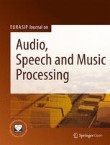JND-based spatial parameter quantization of multichannel audio signals
In multichannel spatial audio coding (SAC), the accurate representations of virtual sounds and the efficient compressions of spatial parameters are the key to perfect reproduction of spatial sound effects in 3...
